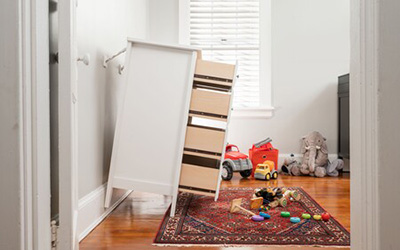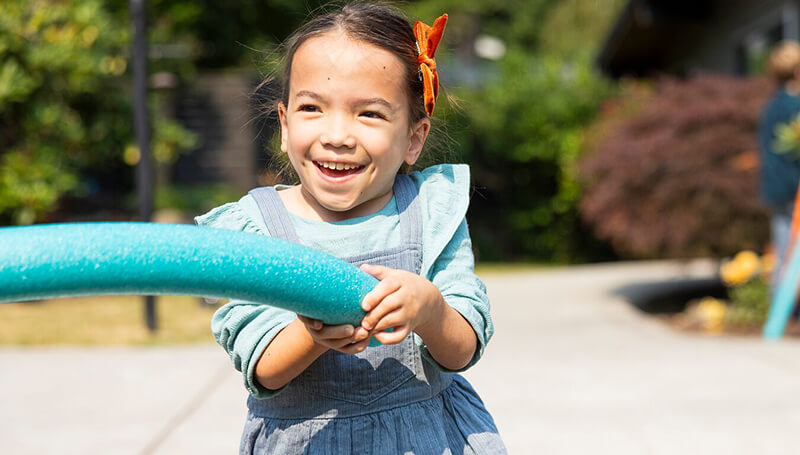Good Growing
Fall 2025
Upstanders Can Help Stop Bullying
 It takes effort and practice to become a quality human being, and parents and caregivers make the best coaches! We can help our kids become upstanders, rather than bystanders. Upstanders are people who stand up and take action to improve things; they do what they can to help those who need it. Bystanders, by contrast, simply stand by and watch when something is wrong.
It takes effort and practice to become a quality human being, and parents and caregivers make the best coaches! We can help our kids become upstanders, rather than bystanders. Upstanders are people who stand up and take action to improve things; they do what they can to help those who need it. Bystanders, by contrast, simply stand by and watch when something is wrong.
Upstanders do their best to treat everyone with respect, kindness and compassion. They are confident enough to reach out in friendship to the new student in class, the shy kid on the school bus or the neighbor who’s just learning English. Upstanders naturally support and protect their peers — and in this way they can help reduce bullying at school and elsewhere.
As parents and caregivers, we can brainstorm and role-play with our young upstanders so they can practice how to respond when they see bullying, while staying safe themselves. When it happens, upstanders can tell the kid doing the bullying to stop. They can also support the child being bullied by asking them to leave the situation, then escorting them away. And of course, upstanders can alert an adult right away so the adult can intervene.
We can be sure our kids understand that in bullying situations, bystanders actually add to the problem by being an audience and giving those who bully the attention they crave. On the other hand, action-oriented upstanders can fix the problem, especially when they work as a team with other upstanders.
As parents and caregivers, we must also be familiar with the bullying prevention information being taught at school so we can reinforce it at home. (Public schools in Washington state must have anti-bullying policies and programs.) For example, your child’s school may provide students with numbers to call or text staff members if they see bullying going on. Be sure your child understands the anti-bullying systems at school so they can take action while also ensuring their own safety.
Keep in mind that upstanders are created at home within families, and their training starts at a very young age. We can praise our kids when we notice them being brave and assertive — and also when they are kind and empathetic. We can tell them how much we appreciate it when we see them protecting a sibling or a friend. Upstanders make the world better in all kinds of ways. And of course, parents are powerful role models. When kids consistently see their parents and other caregivers act with kindness and compassion — and stand up for others — that has a huge impact!
Read our related articles, Together, We Can Stop Bullying and What is Cyberbullying? Visit stopbullying.gov to learn more.
Fight Flu With Prevention
 All children 6 months and older need the flu vaccine every year. During the 2024–2025 flu season, 280 pediatric flu deaths were reported in the U.S. This is the highest number in any non-pandemic flu season since 2004, when reporting began. According to the Centers for Disease Control and Prevention, 89% of these deaths were children who weren’t fully vaccinated against the flu.
All children 6 months and older need the flu vaccine every year. During the 2024–2025 flu season, 280 pediatric flu deaths were reported in the U.S. This is the highest number in any non-pandemic flu season since 2004, when reporting began. According to the Centers for Disease Control and Prevention, 89% of these deaths were children who weren’t fully vaccinated against the flu.
Children ages 6 months through 8 years should receive two doses if this is the first time they’re getting a flu vaccine or if they’ve had only one dose in the past. (Doses are given four weeks apart — so if your child needs two doses, get the first one as soon as it’s available.) Kids 9 and older and those who have received two or more doses in the past need only one dose this flu season. If you have questions, ask your child’s doctor.
Get your whole family fully vaccinated against the flu by the end of October. To access the vaccine, call your healthcare provider, your local health department, or check VaccineFinder.
Learn more about flu basics, prevention and treatment.
Dangers of Button Batteries and Magnets
 The upcoming holidays are likely to bring new toys and electronics into your home. But potential dangers hide in some of these products: button batteries and high-powered magnets.
The upcoming holidays are likely to bring new toys and electronics into your home. But potential dangers hide in some of these products: button batteries and high-powered magnets.
Button cell batteries and lithium coin batteries are disc-shaped batteries found in games, toys and other devices. It’s too easy for children to swallow them — either partially or completely — or get them stuck in their ears or noses. Besides being a choking hazard, these batteries can burn the tissue in the ears, nose and esophagus (the tube that connects the throat to the stomach). If swallowed, a button cell battery can burn through a child’s esophagus in as little as two hours. If you suspect a child has ingested a battery, call the 24-hour National Battery Ingestion Hotline at 800-498-8666 or take them to an emergency room at once.
Know which devices in your home use button and coin batteries and ensure battery compartments are secure. Keep these devices completely out of reach of very young children and warn older kids of the dangers.
Magnets can cause injury or death when a child swallows two or more and they stick together inside the body. Surgery may be needed to remove them. Powerful magnetic balls and cubes sold as stress relievers or fidget toys are especially dangerous. Young children should never play with magnets. For older kids, warn them to never put magnets in their mouth.
Learn more about toy safety and get a safety checklist for home.
 Securing furniture, appliances and TVs can end up on the ‘I’ll Do It Later’ list, but don’t wait. Tragic tip-over accidents can happen in seconds. Children under age 6 are at the greatest risk of these injuries. Anchoring doesn’t take long, and it protects your child — and any other kids who may spend time in your home.
Securing furniture, appliances and TVs can end up on the ‘I’ll Do It Later’ list, but don’t wait. Tragic tip-over accidents can happen in seconds. Children under age 6 are at the greatest risk of these injuries. Anchoring doesn’t take long, and it protects your child — and any other kids who may spend time in your home.
It’s especially important to anchor items with drawers, doors and shelves. They’re easy to secure, and anti-tip kits aren’t expensive. (These systems may be called tethering kits, furniture restraints or safety straps.) New furniture, appliances and TVs often include tethering systems, which should be installed right away. For furniture with shelves, always store heavier items down low.
If it’s not possible to mount your flat-screen TV, place it on a low, sturdy base and push the TV back as far as possible. Keep cords out of reach and avoid storing things your child may want to get to (remotes, toys, books) at the base of the TV.
Get more tips to keep your home safe.
Why and How to Reach the Poison Center
 The Washington Poison Center (WAPC) routinely helps hundreds of people a day. Its free services are confidential, immediate and available 24/7/365. People commonly reach out when someone’s had a poison exposure, either accidental or intentional, including suicide attempts. For WAPC, ‘poison’ can include chemicals, medication, drugs or any substance that could cause harm if used wrong. Nearly 40% of all WAPC cases concern children 5 and younger.
The Washington Poison Center (WAPC) routinely helps hundreds of people a day. Its free services are confidential, immediate and available 24/7/365. People commonly reach out when someone’s had a poison exposure, either accidental or intentional, including suicide attempts. For WAPC, ‘poison’ can include chemicals, medication, drugs or any substance that could cause harm if used wrong. Nearly 40% of all WAPC cases concern children 5 and younger.
There are now three ways to reach the Washington Poison Center: call, text or chat. Phone the Poison Helpline at 1-800-222-1222 or text 206-526-2121. Be sure to add these numbers to your device’s contacts. You can also live-chat online at www.wapc.org. (Text and chat are currently available in English only.)
Learn about the top 10 poison exposures by age group in 2024.
Bedtime Reading Boosts Mental Wellness and Much More
 As kids grow older and family life get busier, time for bedtime stories or reading can drop out of the nightly routine. Don’t let it go! The benefits of reading every night are huge for your child’s growth and development — starting from day one and continuing through the teen years and beyond. Here are just some of the benefits of bedtime reading:
As kids grow older and family life get busier, time for bedtime stories or reading can drop out of the nightly routine. Don’t let it go! The benefits of reading every night are huge for your child’s growth and development — starting from day one and continuing through the teen years and beyond. Here are just some of the benefits of bedtime reading:
- It’s a cozy, comforting ritual that increases a child’s sense of safety and security.
- It supports a child’s emotional health and strengthens the bond between the child and the parent or caregiver.
- It eases the transition from an action-packed day to restful, restorative sleep by calming both body and mind — for the adult as well as the child.
- It makes bedtime something to look forward to, rather than something to delay or resist.
- It improves a child’s listening ability and attention span while fueling their curiosity.
- It promotes literacy by expanding a child’s vocabulary and teaching them to connect the written word to a full understanding of the story, its characters and lessons.
- It helps a child grow emotionally and build empathy by getting to know the characters in a story. Stories naturally lead to the question: “How would you feel in this situation?”
- It allows a child to experience a character’s choices and the resulting consequences, whether positive or negative.
- It’s a healthy activity that — especially for older kids — can transport them to another time and place and get them out of their own heads.
- It plants the seed for a lifelong love of reading, a hobby they’ll never outgrow.
Be sure to make reading a nightly habit that’s as regular as brushing teeth and bathing. When you stay faithful to this routine, you are giving your child a priceless gift — one they may someday pass on to their own child or loved one!
Get more positive parenting information and resources.


